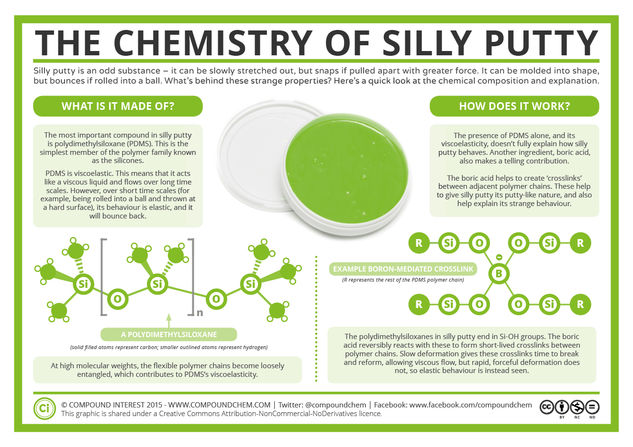© Compound InterestThe Chemistry of Silly Putty
Silly putty (or science putty, as it’s sometimes referred to) is an odd material. Stretch it slowly and it happily deforms, and can be molded very easily. However, pull it apart with enough force and it’ll snap clean in two. It flows imperceptibly slowly, as if it were a thick liquid, but when rolled up into a ball will bounce if thrown at a hard surface. A closer look at the chemicals that make up silly putty can help us explain this strange behaviour.
A number of ingredients go into making silly putty: by weight, 65% of it is a compound called polydimethylsiloxane, but colouring agents are also included to give the wide range of colours that the putty comes in. It’s the polydimethylsiloxane (PDMS for short) that’s a large contributor to the strange properties of silly putty, however.







